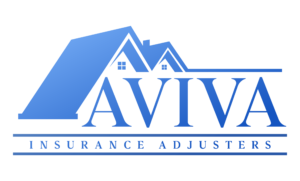Introduction: Understanding Roof Leak Claims
Navigating roof leak claims can feel like a maze. But here’s the thing – it doesn’t have to be. When rainwater starts cheering on your home parade, know that you’re not alone. The first step? Understanding what you’re up against. Most homeowners think roof damage coverage is a given. Spoiler alert: it’s not always the case. Coverage often hinges on the cause of the leak. Was it an uninvited guest like a storm or an overlooked guest like wear and tear? Insurance companies often welcome the former but turn a cold shoulder to the latter. And let’s not overlook the importance of acting fast. Time is not your buddy when it comes to filing a claim. Waiting too long can be seen as rolling out the red carpet for more damage, which insurance companies might not be keen on covering. So, understanding the ins and outs of roof leak claims is your shield and sword in this battle. Be swift, be smart, and you might just navigate this maze successfully.

Identifying Signs of a Roof Leak Early
Spotting a roof leak early can save you a bundle and a headache down the road. Keep an eye out for stains on ceilings and walls, missing or damaged shingles, and damp spots along the fireplaces. These are telltale signs of a roof leak. Mold or a musty smell in your attic can also indicate water getting in where it shouldn’t. Seeing daylight through your roof? That’s a red flag. Act fast if you notice any of these signs. Quick action can make the difference between a minor repair and a major overhaul. Remember, catching a leak early can prevent bigger problems and keep costs down when it comes to filing a claim.
The Importance of Immediate Action with Roof Leaks
When you notice a roof leak, act fast, really fast. Why? First, water damage gets worse over time. It can start with a small drip, leading to mold, damaged ceilings, and even impact the structural integrity of your home. Second, insurance companies. They’re not your friends here. If you delay, they might argue the damage is from neglect, not the sudden leak. This means they could deny your claim. Take photos right away—proof of the leak and any damage it’s caused. Then, get a professional to temporarily patch it up while you sort out the insurance. This isn’t just about fixing a leak; it’s about protecting your home and ensuring you don’t foot the entire bill. Immediate action can save you a headache and a lot of money. Don’t wait, act.
Common Mistakes When Filing a Roof Leak Claim
When it comes to filing a roof leak claim, folks often trip up, making their situation tougher than it has to be. First off, don’t wait around. Delaying your claim is like inviting more damage to your party – the longer you wait, the worse things can get. Second, not documenting everything is a big no-no. Snap photos, keep receipts, jot down dates – your insurance company loves this stuff. It’s their bread and butter to see the proof. Skipping out on choosing a reliable contractor can also backfire big time. You want someone reputable fixing your roof, not just anyone who claims they can swing a hammer. Lastly, never assume your policy covers everything under the sun. Different policies cover different damage types, so understand what yours includes and what it doesn’t. Keep these points in mind and you’ll stand a better chance of having a smooth claim process.
Gathering the Right Documentation for Your Claim
Getting the paperwork right is key to a smooth claim process. Start by taking clear photos of the leak and any damage it has caused – both close-ups and wider shots. Note down when you first noticed the leak and any action you took. Keep all receipts related to repairs, even the small ones, as they add up. Contact your insurer to find out exactly what documentation they need. Some might want a professional assessment or a quote for repairs. Jot down details of all conversations with your insurance company, including dates, who you spoke to, and what was discussed. This detail can make your claim stronger and help avoid back-and-forth delays.
How to Properly Document Roof Damage
When you discover a roof leak, the way you document the damage can greatly impact your insurance claim. Start by taking clear pictures of the damage from multiple angles, both up close and at a distance. This helps show the extent of the leak. Use a time stamp on your photos to prove when the damage happened. If you have before-and-after shots, even better; these can serve as strong evidence of the damage’s severity and that it was not a pre-existing condition. Write down a detailed description of the damage as soon as you notice it, including how you discovered the leak and any potential causes you’ve noticed (like a recent storm). Keep a record of all communication with your insurance company and the roofing contractors. This includes emails, calls (note the date, time, and who you spoke to), and any quotes or reports they provide. If you’ve made temporary repairs to prevent further damage, document these too. This shows you’ve taken steps to mitigate the damage, which insurance companies expect. Proper documentation is your best friend when filing a roof leak claim. It provides clear and compelling evidence that backs up your claim, making it harder for insurers to deny or undervalue your claim.
Selecting the Right Insurance Adjuster
Choosing the right insurance adjuster can make or break your roof leak claim. Many homeowners rush this step, picking the first adjuster their insurance company suggests. Here’s the thing: you can choose a public adjuster instead of the insurance company’s adjuster. Why does this matter? Public adjusters can often offer a more neutral evaluation of your damage, potentially leading to a better settlement for you. Before you pick, do some homework. Look for adjusters with solid experience in roof damage claims. Check their reviews online. Don’t be shy to ask for references. Remember, the adjuster you pick will play a big role in how much you get for your claim. Taking the time to choose wisely can pay off.
The Role of Professional Roof Inspectors in Claims
Professional roof inspectors play a key role in roof leak claims. They’re the ones who check your roof damage and decide how severe it is. This step is crucial. Why? Their reports can heavily influence whether your insurance covers the damage and how much they’ll pay. Think of these inspectors as the bridge between you and your insurer. They look at things like how old your roof is, what caused the damage, and if it falls under your policy’s coverage. If you try to claim without a professional inspection, you might miss key details or misjudge the damage. This can lead to insurance rejecting your claim or not paying enough to cover repairs. Always get a professional to inspect your roof before filing a claim. It makes the process smoother and increases your chances of a fair settlement.
Navigating the Insurance Claim Process Smoothly
When you find a leak in your roof, dealing with insurance claims can be a headache. But knowing a few key tips can make the process smoother. First, document everything. Take clear photos of the damage as soon as you notice it. This can be your best evidence when dealing with the insurance company. Next, review your insurance policy. Understand what’s covered and what’s not. This prevents surprises later on. Act fast but don’t rush. While it’s important to file your claim quickly, take the time to gather all necessary documentation and get a professional assessment of the damage. Keep all communication with your insurance in writing. Phone calls are quick, but having a paper trail can clear up any misunderstandings. Lastly, don’t go it alone if you’re feeling overwhelmed. Consider hiring a public adjuster who can navigate the claims process on your behalf. They take a percentage of your claim but can often increase what you recover from your insurance. Stick to these points, and you’ll find handling your roof leak claim less daunting.
Conclusion: Maximizing Your Roof Leak Claim Success
To wrap it all up, getting the most out of your roof leak claim hinges on being attentive and proactive from the get-go. Always start by reading your insurance policy thoroughly so you know what’s covered and what’s not. It’s crucial. Next, document everything meticulously—from the initial signs of the leak to every conversation you have with your insurer. Take clear photos of the damage and keep all receipts related to repairs, even temporary ones. Choosing a reputable contractor for an estimate can also sway things in your favor. Remember, insurers aim to minimize their payouts, so your detailed documentation and persistence are key weapons in your arsenal. And finally, consider enlisting a public adjuster if you hit a wall. They can be game-changers in maximizing your claim. By steering clear of the common pitfalls and arming yourself with knowledge and preparation, you’re setting the stage for a more favorable outcome with your roof leak claim.




